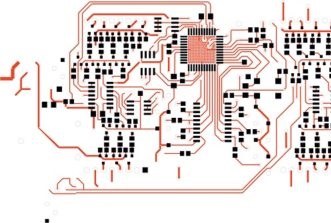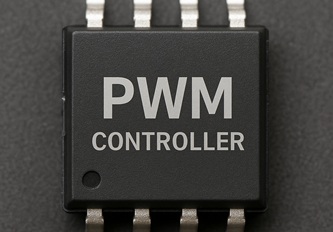Semiconductor Capacitors: Technology, Fabrication, Applications, and Market Trends
21/11/2025, hardwarebee
Semiconductor capacitors have become essential passive components inside modern electronic systems. As frequencies increase, integration density rises, and power integrity margins shrink, traditional MLCC-based solutions are no longer sufficient. On-chip capacitors—MOM, MIM, deep trench—and especially standalone silicon capacitors now form the backbone of RF front-ends, AI accelerators, medical implants, and aerospace electronics.
1. Introduction to Silicon Capacitors
A semiconductor capacitor is a capacitive structure fabricated directly on or within a semiconductor substrate using:
- doped silicon regions
- deposited thin-film metals
- ultra-thin dielectric layers (SiO₂, Si₃N₄, HfO₂, Al₂O₃, combinations)
Unlike discrete MLCCs, semiconductor capacitors offer:
- extremely low ESL/ESR
- consistent high-frequency behavior
- excellent linearity
- robust mechanical and thermal reliability
- miniature footprints compatible with SiP/5G modules
They now form the highest-performance capacitor option available for GHz-range and sub-mm packaging environments.
Read more about semiconductor capacitors.
2. Cross-Section of a Silicon Capacitor Die
3. Types of Semiconductor Capacitors
MOM (Metal–Oxide–Metal) Capacitors
- Parallel metal fingers in BEOL routing.
- Very linear, excellent for RF.
- Lower density (~1 fF/µm²).
MIM (Metal–Insulator–Metal) Capacitors
- Thin-film dielectrics (SiN, Al₂O₃, HfO₂).
- Higher density (1–7 fF/µm²).
- Strong RF performance and low leakage.
Junction Capacitors (PN/MOSCAP)
- High density but highly nonlinear.
- Used where area matters more than linearity.
Deep Trench Capacitors
- Etched 10–50 µm deep structures.
- Very high density (~80 fF/µm²).
- Used in DRAM and mixed-signal processes.
Standalone Silicon Capacitors
- The highest performance passive capacitor available.
- 20–120 nF/mm² density
- ESR < 10 mΩ, ESL < 20 pH
- Extreme linearity and stability
4. How Silicon Capacitors Are Manufactured
Standalone silicon capacitors use a thin-film process built on high-resistivity silicon:
Step-by-step flow
- High-resistivity float-zone silicon (>1 kΩ·cm).
- Bottom metal deposition (TiN, AlCu, Ru).
- ALD dielectric stack (SiO₂, Si₃N₄, HfO₂ combinations).
- Top metal deposition.
- Passivation for hermetic protection.
- Backside thinning and optional metallization.
- Dicing (usually plasma for low mechanical stress).
- Packaging: WLCSP, flip-chip, or SiP embedding.
5. Performance Characteristics
| Parameter | Typical Values |
|---|---|
| Capacitance Density | 20–120 nF/mm² (silicon thin-film) |
| ESR | <10 mΩ at 1 GHz |
| ESL | <20 pH |
| Temperature Coefficient | ~ ±20 ppm/°C |
| Breakdown Voltage | 12–40 V depending on stack |
| Leakage | <10⁻⁸ A/cm² |
6. Applications
Semiconductor capacitors dominate applications where frequency, linearity, reliability, and physical integration are critical.
6.1. RF Front-Ends (5G/6G, WiFi 7, UWB)
RF front-ends are constrained by parasitics. Silicon capacitors enable:
- matching networks with minimal variation
- stable tuning at mmWave (>28 GHz)
- linear biasing for LNAs, PAs, and VCOs
- tiny form factors for SiP-based RF modules
Their low ESL maintains true capacitive behavior deep into mmWave frequencies, outperforming MLCCs that turn inductive past ~2 GHz.
6.2. Power Integrity for High-Speed Digital (AI accelerators, DDR5/6)
AI processors (H100/H200, MI300, Gaudi, etc.) demand:
- multi-GHz PDN bandwidth
- ultra-fast transient response
- <10 mV noise windows
- 100–200 A/ns current slew rates
Silicon capacitors enable:
- PDN impedance flattening
- decoupling extremely close to die bumps
- stable capacitance unaffected by switching bias
MLCCs cannot meet GHz-range decoupling due to DC bias and SRF limitations.
6.3. Medical & Implantable Devices
In implantables, reliability is critical:
- zero mechanical cracking
- moisture-proof dielectric
- predictable long-term drift
- low leakage for ultra-low-power electronics
Applications include:
- pacemakers & ICD telemetry
- neurostimulators
- subcutaneous sensors
- medical RF transceivers
Silicon capacitors offer unmatched biological stability and longevity
.
6.4. Aerospace & Defense
Harsh-environment electronics need:
- radiation tolerance
- vibration resistance
- thermal cycling endurance
- high-frequency stability
Silicon capacitors outperform MLCCs in:
- radar T/R modules
- missile guidance
- satellite payloads
- avionics DC/DC converters
No microphonic/piezoelectric effects and extremely predictable behavior.
7. Market Landscape & Trends
The silicon capacitor market is rapidly accelerating due to RF scaling, advanced packaging, and AI power requirements.
7.1. Market Size & Forecast
Industry projections:
- $1.8B in 2025
- $3.4B in 2030
- CAGR ~12–14%
Driven by RF modules, SiP integration, AI platforms, and automotive growth.
7.2. Key Growth Drivers
RF content explosion
5G/6G devices integrate 40–70 filters, tunable antenna systems, and complex PA modules. Silicon capacitors offer stable, predictable behavior at mmWave.
AI Data Center PDN requirements
AI GPUs draw >1000 A with <10 mV allowed ripple. Silicon capacitors flatten PDN impedance into GHz ranges.
MLCC supply-chain instability
Past shortages pushed OEMs to seek wafer-based, scalable alternatives.
SiP & heterogeneous integration
Apple, Qualcomm, AMD, NVIDIA, and automotive OEMs are heavily adopting SiP with embedded passives.
Automotive reliability
Silicon capacitors withstand moisture, temperature, and vibration better than ceramics.
7.3. Key Industry Players
- Knowles / IPDIA — market leader in silicon thin-film capacitors
- Murata — high-frequency and ALD-based solutions
- STMicroelectronics — embedded passives in power & sensor SiPs
- TSMC / GF / Tower / X-FAB — high-density MIM for RF & BiCMOS
The performance of on-chip capacitor options has become a competitive factor among foundries.
8. Block Diagram: Where Semiconductor Capacitors Fit in Modern Electronics
- on-substrate capacitors for gate drivers
- embedded die in multi-chip GaN modules
- significantly reduced parasitics and ringing
9.4. Fully Integrated PDN for AI Accelerators











